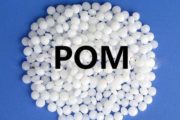
Styrene acrylonitrile (SAN) has good rigidity, strength, and toughness, and better chemical resistance than polystyrene.
Typical Applications of Styrene acrylonitrile (SAN)
Electrical
– receptacles
– mixer bowls
– housings
– refrigerator fittings
– chassis for television sets
– cassette boxes
Automotive
– head lamp bodies
– reflectors
– glove compartments
– instrument panel covers
Household applications
– tableware
– cutlery
– beakers
Plastic SAN Injection Molding Processing Conditions
| Conditions Name | Value |
|---|---|
| Drying | SAN absorbs moisture when not stored properly so drying at 80°C [176°F] for 2-4 hours prior to molding is recommended. |
| Melt Temperature | 200°C–270°C [392°F–518°F]; 230°C–260°C [446°F–500°F] for most applications; Lower end of the range is used for molding thick wall components |
| Mold Temperature | 40°C–80°C [104°F–176°F]; SAN solidifies rapidly at higher temperatures; for reinforced grades, the mold temperatures should not be less than 60°C [140°F]. |
| Material Injection Pressure | 35–130 MPa |
| Injection Speed | High speeds are recommended. |
Gates of SAN Injection Mold
All conventional gate types may be used.
Chemical and Physical Properties of Styrene acrylonitrile (SAN)
SAN copolymers are produced by the polymerization reaction of styrene and acrylonitrile. They are strong, transparent materials. The styrene component imparts clarity, stiffness, and processibility and the acrylonitrile component imparts chemical and thermal resistance.
They have excellent load bearing capacity, rigidity, good resistance to chemicals, heat deformation, and cyclic temperature loads, and dimensional stability. The properties are dependent on the acrylonitrile content and commercial grades offer different acrylonitrile molecular masses. The addition of glass fibers enhances rigidity and resistance to heat deformation, and decreases the coefficient of linear thermal expansion.
The Vicat softening point is approximately 110°C [230°F] and the deflection temperature under load is approximately 100°C [212°F].
Shrinkage ranges from 0.003–0.007 mm/mm [0.3–0.7%].
Chemical and Physical Properties of Styrene acrylonitrile (SAN)
SAN copolymers are produced by the polymerization reaction of styrene and acrylonitrile. They are strong, transparent materials. The styrene component imparts clarity, stiffness, and processibility, and the acrylonitrile component imparts chemical and thermal resistance.
They have excellent load-bearing capacity, rigidity, good resistance to chemicals and heat deformation, cyclic temperature loads and dimensional stability. The properties depend on the acrylonitrile content, and commercial grades offer different acrylonitrile molecular masses. The addition of glass fibers enhances rigidity and resistance to heat deformation and decreases the coefficient of linear thermal expansion.
The Vicat softening point is approximately 110°C [230°F] and the deflection temperature under load is approximately 100°C [212°F].
Shrinkage ranges from 0.003–0.007 mm/mm [0.3–0.7%].









